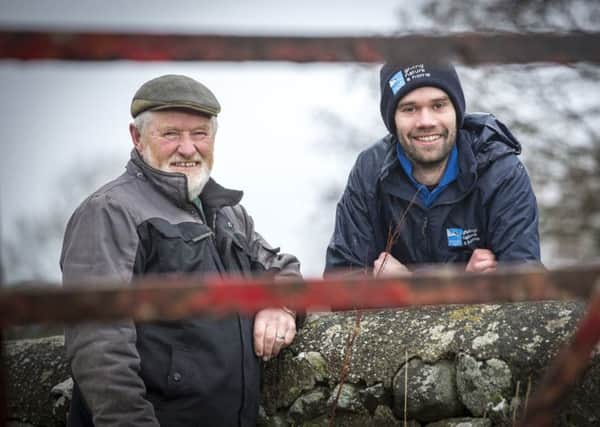Farming is an important tool for conservation


EAST CO DOWN
“One of the areas that RSPB NI has been working in for the last 20 years has been in and around east Co Down and the Ards Peninsula. It is important to us as it is one of the last arable strongholds in the country.
“Sadly in the last 50 years there has been a major reduction in the amount of mixed farming.
Advertisement
Advertisement
“With arable farming it is very important for seedings species, for example Yellowhammers, tree sparrow and Linnet, and these birds have seen a decline in the last 20 or 30 years.
“The Yellowhammer is now red listed and in the 1990s it was thought that there was as little as 5,000 pairs left in the country.”
Phil explained research had shown that in areas which received the most advice there was an 89 per cent increase in populations.
“There remains a strong population in east Co Down, so we have been working there with around 70 farmers to try and deliver for these seeding species.
Advertisement
Advertisement
“That involves conservation advise in terms of what options you can put in place farms which will benefit these birds.”
CO ANTRIM UPLANDS
The uplands of the Co Antrim Hills is an area of national species and on of the last strongholds for the Curlew.
Phil explained: “Our focus in the upland and Co Antrim Hills is in and around Glenwherry. This is an important area not only for the RSPB but more generally in regards to species and habitat of national importance.
“It is one of the last strongholds for the Curlew. And that is because that sort of upland environment works well for that species in terms of rush pasture. We have been engaging with farmers there as part the halting environmental loss project which has preceded the the focus area work that we have ongoing at the moment.
Advertisement
Advertisement
“That involved delivering good habitat for Curlews and other breeding waders. There was a lot of rush cutting and trying to create those conditions for breeding waders to nest in the spring.”
FERMANAGH/LOUGH ERNE
Livestock is an important tool in the RSPB’s conservation in the Fermanagh Lakelands.
“In Co Fermanagh we assist with the management of some 44 islands on Lough Erne. The islands are really important for breeding waders such as Curlew, Redshank, Snipe and Lapwing.
“Within that area were have conservation advice being carried out with farmers in terms of grass management, removing scrub to allow us to create the perfect nesting and feeding opportunities for these species.
Advertisement
Advertisement
“Another important aspect of our work in the Fermanagh lakes is the livestock and using how we use it as a tool for our conservation work.
“Having livestock on the land helps to create those conditions that you need to have for nesting and feeding. So farming is definitely a key tool there.
“This has been success, there was research that showed that there was as little as 98 pairs of breeding waders in 2011, which had dropped down from about 514 in the 1980s. But thanks to the work with the farmers in these areas we have to around about 250 pairs. Which is a sign, even in the face of national decline, you can help a recovery.”
LOUGH NEAGH AND LOWLANDS
“It is a unique landscape. Lough Beg is five per cent of all wet grassland habitat in Northern Ireland, so its very valuable habitat but because its wet grassland it can be difficult to manage,” said Phil.
Advertisement
Advertisement
“If you go in with a normal tractor to cut rush you will find that your get stuck very quickly.
“As part of our work we trialled innovative solutions with a Soucy tractor, which is a very low pressured tractor which is less pressure than a human footprint.
“That has enabled farmers to go in to cut the rush.
“The condition of that site has improved significantly. And we now offer land management services and offer these solutions to farmers in the wider landscape.”